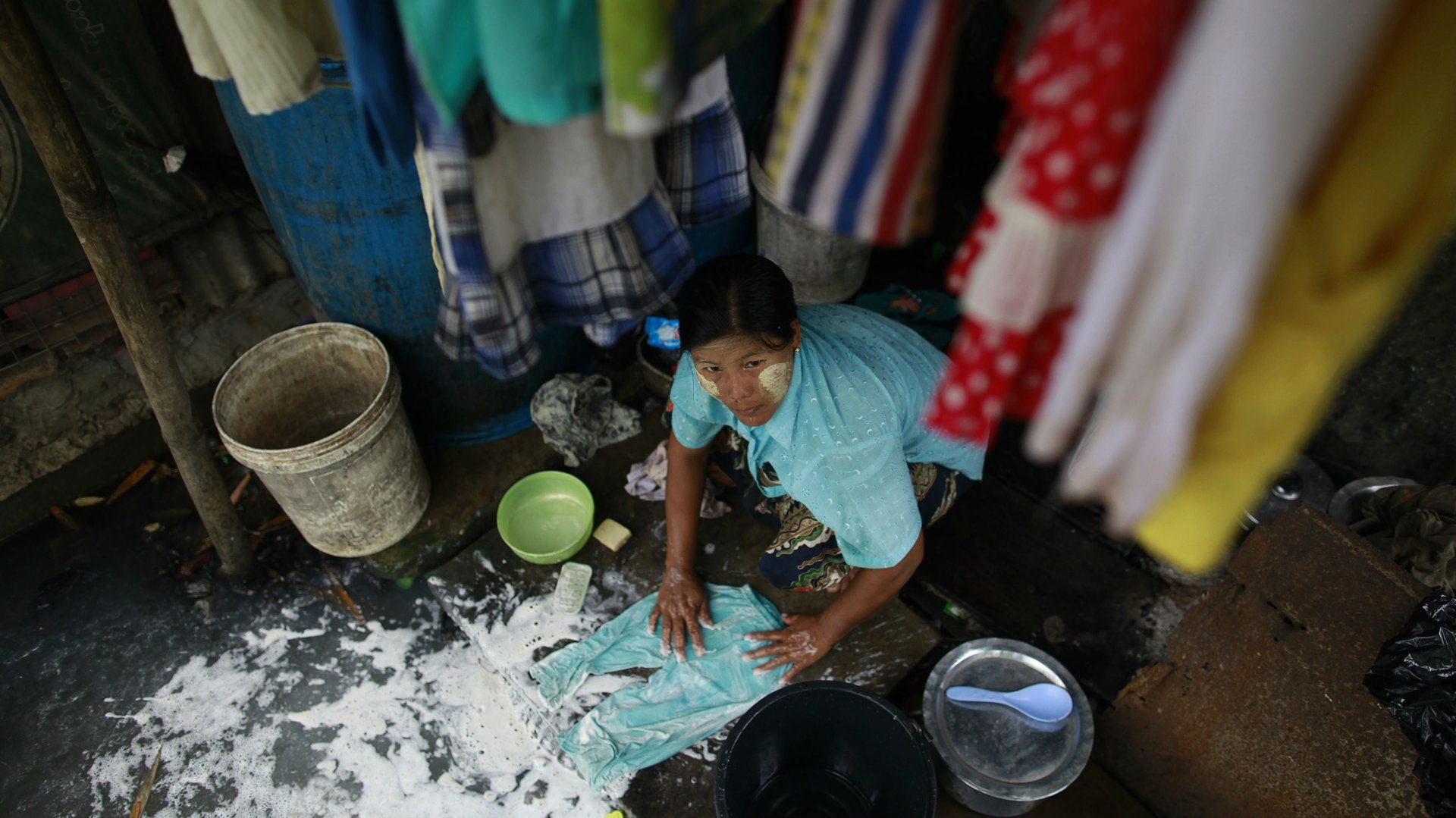There’s a mind-boggling amount of work women do that we literally can’t quantify
Women often aren’t paid for the work they do. Every day they chalk up an average of 4.5 hours of free labor in household chores and childcare regardless of where they are in the world. In developing countries, women can do 10 times as much as men.


Women often aren’t paid for the work they do. Every day they chalk up an average of 4.5 hours of free labor in household chores and childcare regardless of where they are in the world. In developing countries, women can do 10 times as much as men.
If the hours of unpaid labor done by women worldwide were paid at minimum wage, they would be worth at least $10 trillion—more than the GDP of China, according to a conservative estimate by McKinsey.
But these are just estimates. In truth, we don’t have sufficient data on much of the work done by women around the world. The same society and infrastructure that collects and applies data from every facet of our lives can’t efficiently track the hours women work and get paid outside official workplaces.
“We cannot close the gender gap unless we close the data gap,” said Melinda Gates, who announced at the Women Deliver conference in Copenhagen Tuesday (May 17) that the Gates Foundation will donate $80 million towards improving data collection with focus on data on women. “By many metrics, it’s never been a better time to be a woman,” she said. Nonetheless, she said, progress in gender equality needs to be based on quantifying the gaps.
Papa Seck, chief statistician of UN Women who leads a project on evidence and data for gender equality, said in an interview that labor surveys are often based on old economic theories that assume only the husband can provide information about the household. When questions are asked about property, or work, only his answers are taken into account, so the work of a woman might not be accounted for. Even when both husband and wife respond to a labor survey, questions may not be nuanced enough to capture work that doesn’t earn a wage. Other times, data is aggregated without keeping gender into account.
In 2013, the international conference of labor statisticians agreed to include all types of labor, paid and unpaid, in its definition of work, but that revision is taking time to reflect in field work, Seck said. Aside from household work, women often provide so-called informal self-employment such as working for a couple hours a day or working for free for a family enterprise.
Failing to adequately capture the full extent of women’s productivity keeps them in dependent and passive roles, which can justify gender-skewed dynamics. It also makes it difficult to relieve women of their unpaid work. If you can’t count it, does it exist?
According to a McKinsey report discussed at the conference, within 10 years women could contribute $12 trillion more to the world economy with better workplace participation (working full time, in better jobs and with higher salaries), a number that could reach $28 trillion if full professional gender equality were achieved.
The McKinsey research, presented by Anu Madgavkar, one of its authors, and Vivian Hunt, managing partner of McKinsey for UK and Ireland, showed that a global investment of $1.5 trillion to $2 trillion would be needed to boost women’s professional involvement. A large portion of that money would fund better social and family policies, allowing women to work outside the home. But without better data to quantify the free and informal work done by women, gaining such funding will be problematic.